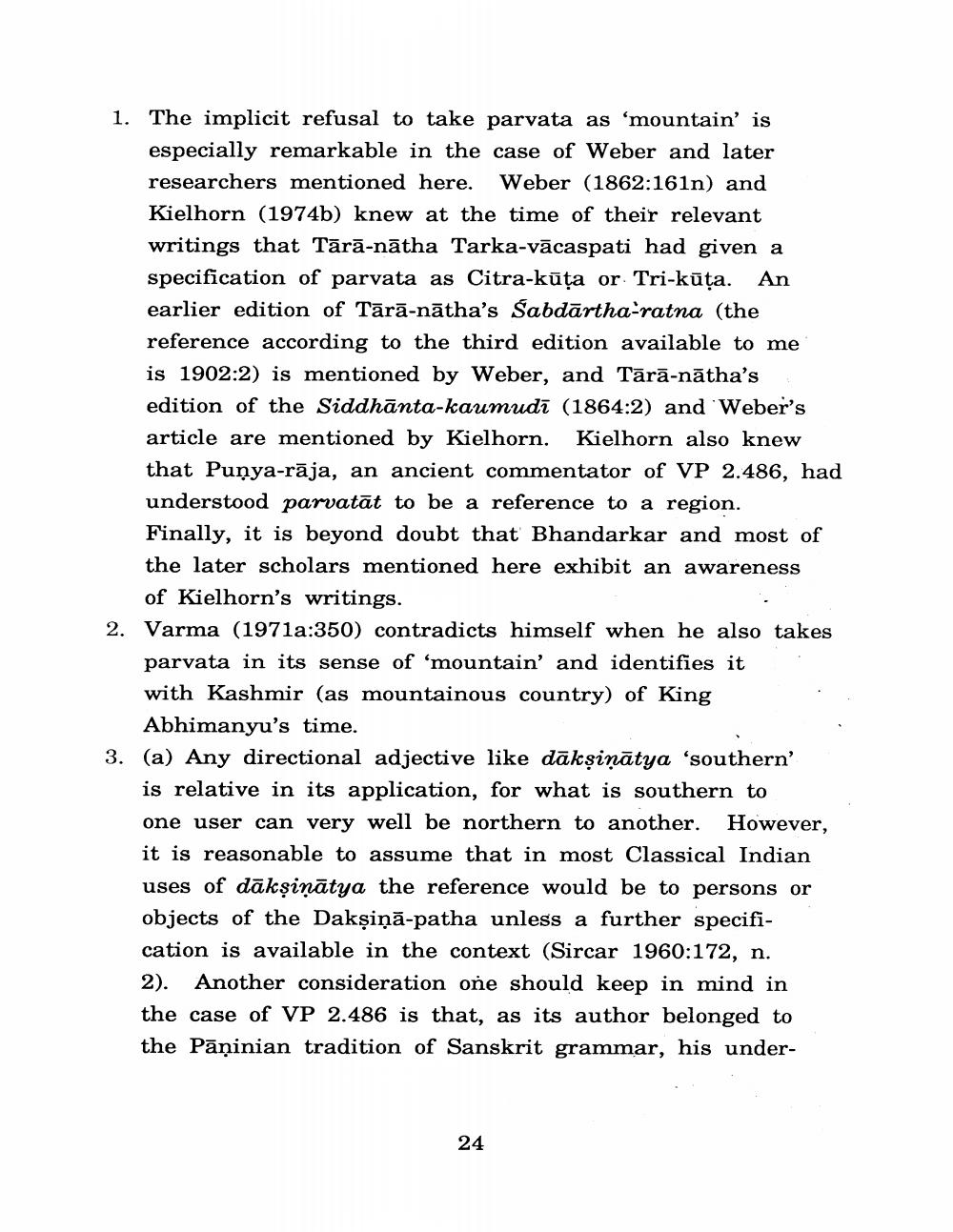________________
1. The implicit refusal to take parvata as 'mountain' is
especially remarkable in the case of Weber and later researchers mentioned here. Weber (1862:161n) and Kielhorn (1974b) knew at the time of their relevant writings that Tārā-nātha Tarka-vācaspati had given a specification of parvata as Citra-kūța or Tri-kūţa. An earlier edition of Tārā-nātha's Sabdārtha-ratna (the reference according to the third edition available to me is 1902:2) is mentioned by Weber, and Tārā-nātha's edition of the Siddhānta-kaumudī (1864:2) and Weber's article are mentioned by Kielhorn. Kielhorn also knew that Puṇya-rāja, an ancient commentator of VP 2.486, had understood parvatāt to be a reference to a region. Finally, it is beyond doubt that Bhandarkar and most of the later scholars mentioned here exhibit an awareness
of Kielhorn's writings. 2. Varma (1971a:350) contradicts himself when he also takes
parvata in its sense of 'mountain' and identifies it with Kashmir (as mountainous country) of King
Abhimanyu's time. 3. (a) Any directional adjective like dāksinātya 'southern
is relative in its application, for what is southern to one user can very well be northern to another. However, it is reasonable to assume that in most Classical Indian uses of dākṣiṇātya the reference would be to persons or objects of the Dakşiņā-patha unless a further specification is available in the context (Sircar 1960:172, n. 2). Another consideration one should keep in mind in the case of VP 2.486 is that, as its author belonged to the Pāninian tradition of Sanskrit grammar, his under
24




